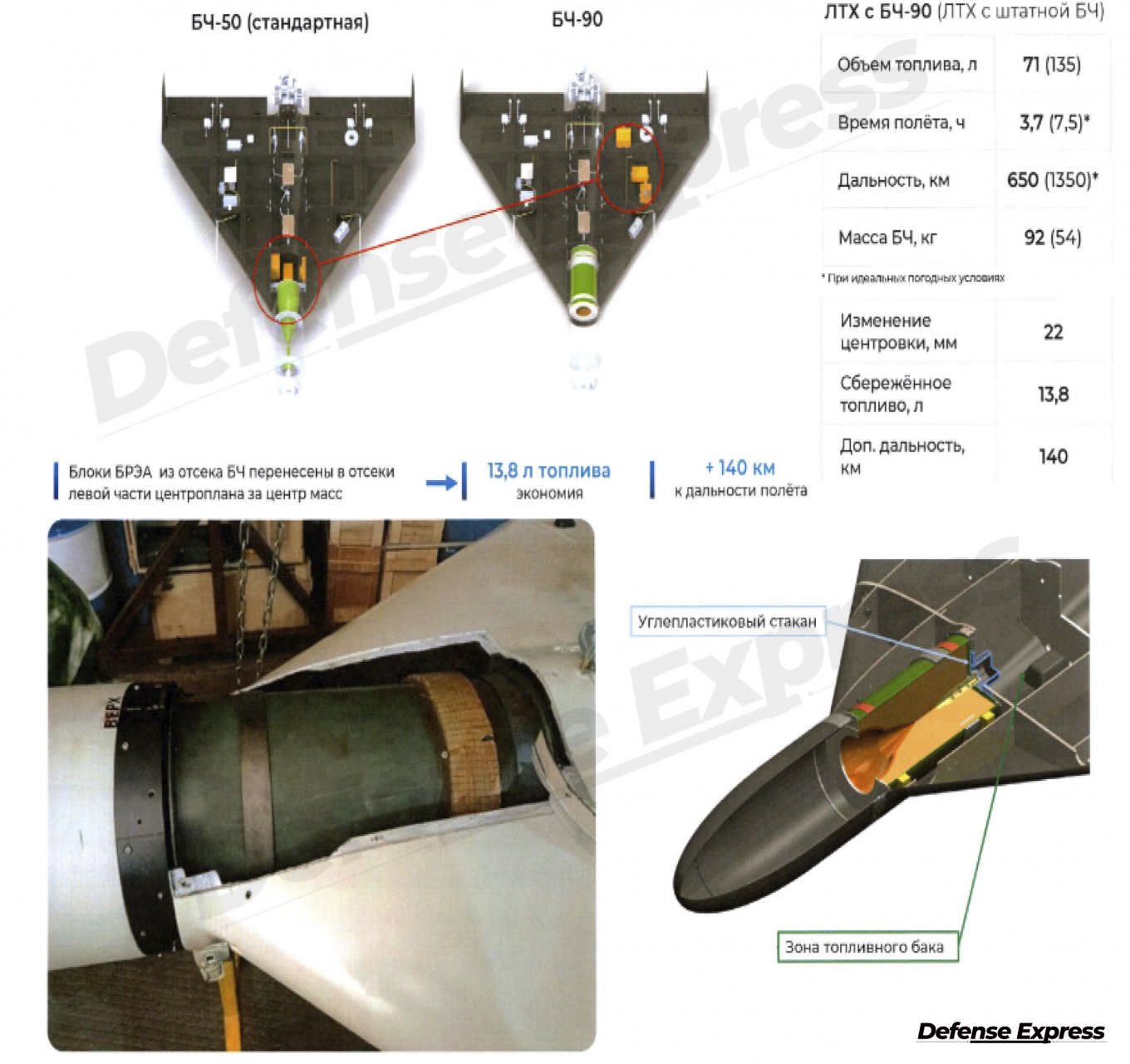Alabuga, the special industrial zone in russia is where the Shahed-136 drones are assembled and where russian engineers are actively working on modernizations to this weapon. Insights into these processes has become available to the public thanks to "hacktivists" who broke into databases and leaked valuable documents, including tech data, names of specialists and authorities involved, and many more.
Among these papers, there are indications that a new modification of Shahed-136 has received a more powerful 90-kg warhead and some other improvements. Defense Express has gained access to some of these documents, namely the presentation slides showcasing the newest developments. Earlier we discussed how Chinese companies help in those efforts and new guidance proposals, this time let's focus on the upgraded warhead.
Read more: With Chinese Help, russia is Working to Turn Shahed-136 into a Lancet-Type Loitering Munition (Document)

The modernized warheads are integrated into Shaheds with minimal adjustments to the airframe and to the established layout which means the upgrades can be implemented in mass-produced models quite quickly. As for the 90-kg warhead specifically, some of the radio equipment from the nose part and some fuel tanks were relocated inside the aircraft so that a heavier explosive doesn't alter the center of mass.
The new warhead was named BCh-90 and described as OFBZ, which is likely decoded as Fragmentation-High-explosive Armor-piercing-Incendiary. Given the visualization provided in the slides, it has a shaped charge liner to pierce through an obstacle upon detonation.
Notably, the presentation says a few Shaheds of this new type were used during the attack on the city of Zaporizhzhia in southern Ukraine on November 25th, 2023. According to the Ukrainian Air Force report issued later that day, the russians did use Shahed-136 drones, although 71 out of 75 of them were taken down by Ukraine's air defense.

The document claims that the effectiveness of the 90-kg warhead is 70% greater compared to the regular 50-kg one, after all, the weight of the explosives in the filling is 62 kg against 28 kg. On the downside, the increase in power comes with a reduced flight range: as noted in the declarations, the range drops from 1,350 km to 650 km under ideal weather conditions.
Another new warhead introduced to Shahed-136 is the thermobaric BCh-50. The emergence of this type of weapon for Shahed drones has been speculative for a while, with unconfirmed reports about Shaheds with vacuum bombs allegedly being used in Ukraine a few times. The thermobaric warhead is produced by the Scientific Research Institute of Applied Chemistry (NIIPKh).

There are also suggestions to equip Shaheds with other HE-FRAG-Incendiary warheads from NPO Bazalt and JSC Mechanical Engineering Research Institute Named after V.V. Bakhirev, the latter covered in our previous article.

The document also contains data on the needs of russian military units, indicating the plans for the production of Shahed-136 in the russian federation, although without deadlines. According to these plans, 3,000 thermobaric warheads, and 7,000 high-explosive-incendiary warheads of 50 kg will be ordered.

As for the new BCh-90 warhead, they only ask 30 prototypes for tests, prognosing an order for another 1,000 mass-produced in the future. That makes a total demand of 11,000 warheads of all types. Presuming it's a one-year plan, that means about 30 per day, a tempo roughly in sync with the daily expenditure of Shaheds for attacks on Ukraine.
In summary, regarding the potential increase in Shahed-136s' warhead weight, the only thing known for a fact is that russian engineers have already finished working on designs but despite the tests of the new BCh-90 held back in November 2023, no information regarding the use of drones with this novel warhead has been recorded since then.
Read more: ISW Analyzes Ukrainian Strike on russian Shahed Drone Production Facility














